High-frequency start TIG welding is a welding technique that uses high-frequency energy to initiate the arc in TIG welding.
This method offers several advantages over traditional TIG welding start settings, including improved arc starting and stability, reduced contamination, and the ability to start the arc on thin or delicate materials.
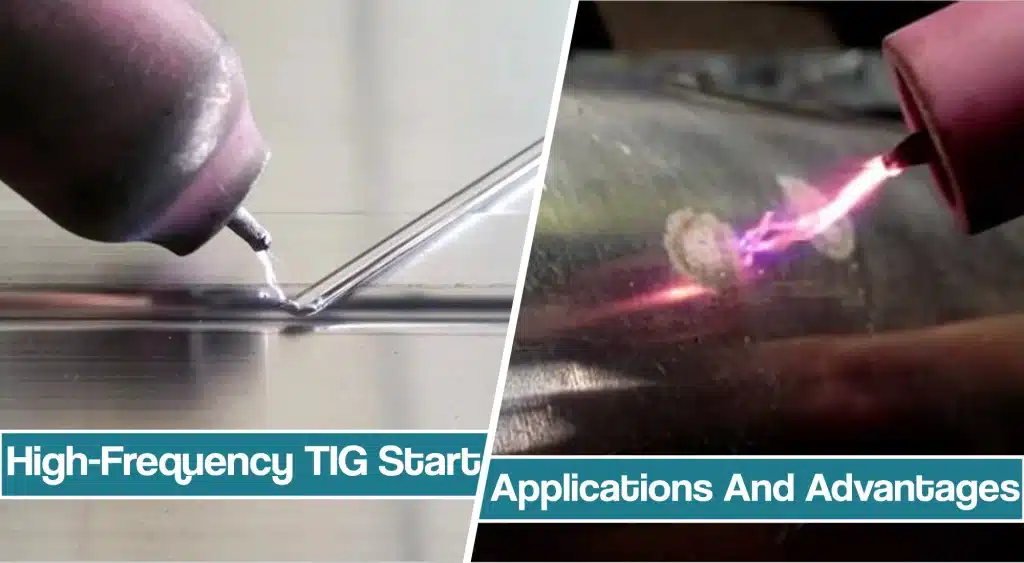
Even though HF ignition is the most beginner-friendly TIG starting method, some find it challenging to master the technique and achieve a consistent and reliable start.
In this article, we will take you through the basics of high-frequency TIG start, including the equipment you need, how to set up your welder, and tips for getting the best results.
What is High-Frequency TIG Start In Welding
High-frequency start in Tungsten Inert Gas (TIG) welding is an arc starting method that utilizes a current. It works by passing an electrical current from the welding machine to the tungsten electrode at a high frequency of around 200 kHz.
This high-frequency energy causes an arc to form between the TIG tungsten electrode and the workpiece, which eventually starts the welding process. A High-frequency generator creates an electric field that disrupts the air gap between the electrode and the workpiece, allowing an arc to be struck without making contact.
Since the high-frequency method requires no contact with the metal, the TIG arc is easily initiated without any risk of contamination and tungsten inclusions.
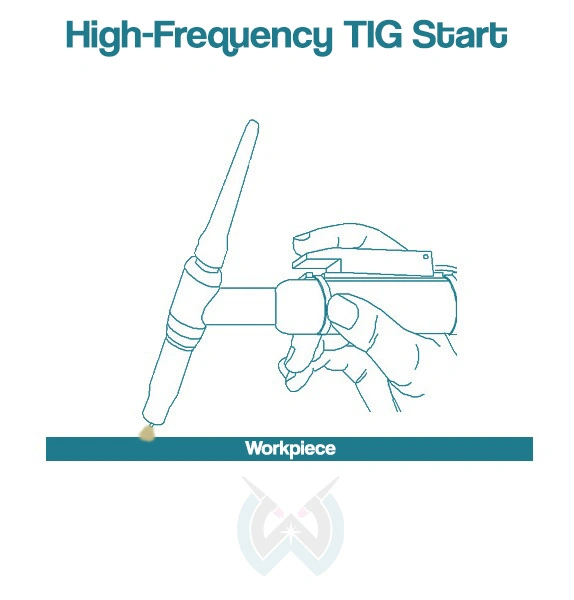
The process can be automated, eliminating the need for manual manipulation when starting an arc. In addition, it has a high success rate, which makes it reliable and consistent.
The HF start process provides a much faster and more reliable arc starting than traditional manual arc starting techniques such as a scratch or Lift Arc TIG. It also minimizes the risks associated with TIG welding, including accidental short circuits and misfires, as well as reducing spatter from occurring when starting an arc.
What Do You Need And How To Initiate A High-Frequency Start?
To use a High-frequency start TIG welder setting, you will need a welding power source with adjustable output current, a welding torch with a compatible high-frequency rate and adjustable output voltage (torch trigger or foot pedal), and a ground clamp for grounding your workpiece. You should also make sure that all of your connections are tight and secure before beginning work.
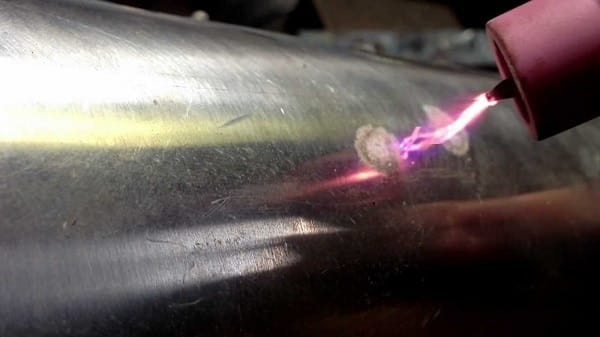
When initiating an arc using HFS, you must first set up the output current on your power source to the desired amperage value. Then you must set up the high-frequency rate on your welding torch to match that of your power source’s output current.
After that, you should adjust the output voltage on your welding torch until it matches that of your power source’s output voltage. Finally, you can begin to initiate the arc by pressing down on the torch switch until you hear a high-pitched sound coming from it. The machine senses the connection, and the welding current initiates the arc on the electrode tip.
Once you have successfully initiated the arc, you can begin welding with confidence, knowing that you have achieved an effective starting point for your welds. With this method, you can ensure that you are getting a stable and consistent weld every time without encountering any unexpected issues or problems along the way.
Applications Of High Frequency Start In TIG Welding
High-frequency TIG is beneficial for many applications, such as welding thin materials, reducing arc start irregularities, and eliminating arc wandering. Applying high-frequency current to the arc before welding helps initiate the arc more quickly and smoothly than when using conventional methods.
The high-frequency start is commonly used in the aerospace industry to weld aluminum parts.
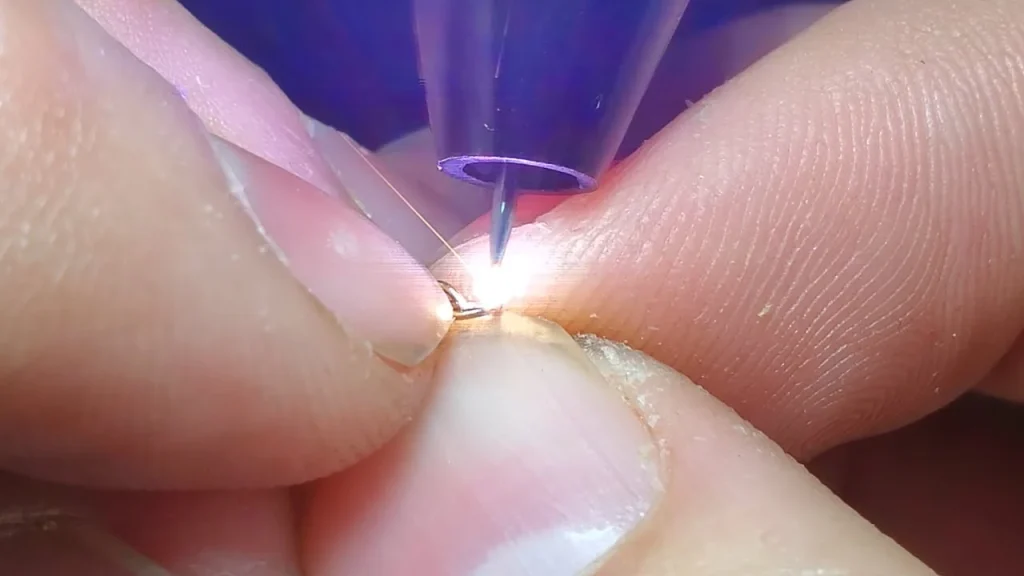
This method is especially beneficial when welding thin aluminum sheets since it helps reduce the risk of burn-throughs and provides a clean, consistent weld.
The automotive industry also uses this method in various applications ranging from exhaust manifold welding to sheet metal fabrication. In these processes, High-frequency TIG helps produce a consistent start of the arc, which increases productivity and reduces rework costs.
Finally, the HF TIG process is often employed in food processing equipment manufacturing due to its ability to produce clean welds with minimal distortion or contamination of food products. In this application, HF TIG provides superior results compared to other methods, such as shielded metal arc welding (SMAW).
How High Frequency Compares To The Scratch Start Method?
The main difference between High Frequency and Scratch start TIG welder settings lies in the way in which the arc is established between the tungsten electrode and the workpiece. However, that’s not all. The way that arc starts also affects the ease of use, welding speed, and costs.
The scratch start technique does not employ special equipment or techniques and instead relies on physically striking the tungsten electrode against the workpiece.
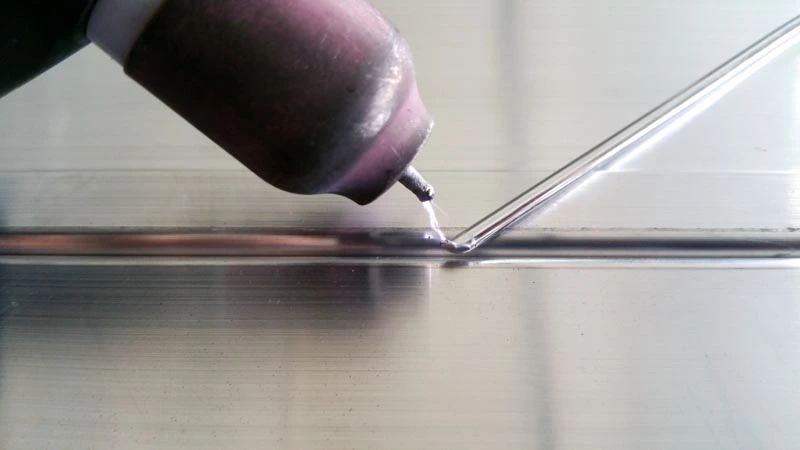
This creates sparks that are then used to ignite an arc, similar to a Stick welder. This is the oldest DC TIG start method, but many beginners found it hard to perform, and there are risks of tungsten inclusion and contamination due to contact with tungsten and workpiece.
In terms of cost, High-frequency start tends to be more expensive due to the additional equipment needed for its operation. However, it can provide cost savings in terms of improved weld quality and consistency due to its ability to accurately control arc starts, as well as a reduction in post-weld processing costs caused by fewer defects and less time spent reworking welds. Additionally, due to technological advancement, we see high-frequency start in much cheaper, hobbyist TIG welding systems.
High-frequency start tends to be faster than Scratch start due to its ability to create consistent arcs with minimal effort on the part of the welder. This can result in significant time savings for production jobs that require multiple welds over long periods of time.
What Are The Differences Between High Frequency And Lift TIG Arc Starting Methods?
Even though the Lift Arc technique offers better performance than the standard Scratch arc starting method, it still has one significant drawback over the High-frequency.
With TIG Lift start, the tungsten touches the workpiece for a brief moment, and you lift the TIG torch to initiate the arc. So even though the contact with the surface is minimal, there is still that brief moment where you have to touch the base metal to initiate the arc.
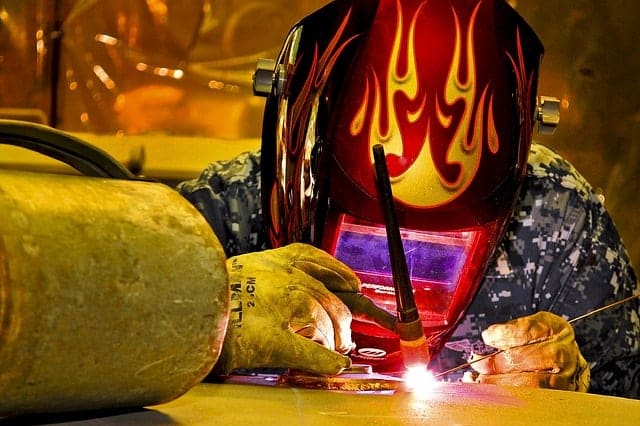
The arc gap acts as a buffer between the electrode and the workpiece, providing protection from excessive heat buildup during welding. The lift arc method was designed as a solution for the drawbacks of scratch start welding system, and it somewhat reminds of a high-frequency start. However, it still cannot achieve the advantages of high frequency. That’s why Lift arc ignition is now standard for most TIG welding machines and is usually found in those less pricy ones.
When You Shouldn’t Use The High-Frequency Start?
Even though the High-frequency arc initiation method offers numerous advantages over the other TIG starting methods, it has one significant disadvantage. The high frequency of around 200 kHz creates “electrical noise”, which can interfere with electrically sensitive devices, such as computers, radios, phones, CNC tables, or signal amplifiers. So if you are TIG welding near sensitive devices, make sure you switch to Lift TIG.
Additionally, HF start doesn’t work best on material that has a high level of contaminants, such as oil, dirt, and grease. This is because the high-frequency current may cause increased spatter and lack of fusion due to the non-conductive materials. However, TIG welding in general, doesn’t perform well on dirty surfaces.
Summed Up Advantages of High-frequency Start
- Improved weld precision and accuracy due to the ability to control the arc starting parameters.
- Higher quality welds with less spatter.
- Reduced arc time and improved weld speed.
- Greater penetration of the weld into the material, allowing for deeper welds with less distortion.
- Ability to start an arc at a lower amperage, reducing the thermal stress on the material.
- Reduced workpiece burn-through and reduced post-weld cleaning.
- Superior flexibility in welding a variety of materials with different thicknesses.
- Lower cost of ownership due to minimized power consumption and increased consumable life.
Conclusion
High-frequency start TIG welding is a valuable technique that offers several advantages over traditional TIG welding. By using high-frequency energy to initiate the arc, this method provides improved arc starting and stability, reduced contamination, and the ability to start the arc on thin or delicate materials.
However, mastering the technique requires practice and an understanding of the equipment and settings. Whether you’re a professional welder or a DIY enthusiast, by understanding the basics of high-frequency start TIG welding, you’ll be able to produce clean, strong, and precise welds every time. So, get started today and take your welding skills to the next level with high-frequency start TIG welding.
Resources:
- https://www.weldclass.com.au/blog/40-tig-welding-what-is-scratch-start-lift-arc-and-hf-ignition-
- https://americantorchtip.com/blog/tig-welding-scratch-start-lift-start-or-high-frequency/
- https://www.everlastgenerators.com/blog/hf-start-vs-dc-lift-start-tig-vs-scratch-start
- https://blog.perfectwelding.fronius.com/en/tig-welding-hf-ignition/
- https://www.lincolnelectric.com/en/welding-and-cutting-resource-center/process-and-theory/micro-start-tig-technology





